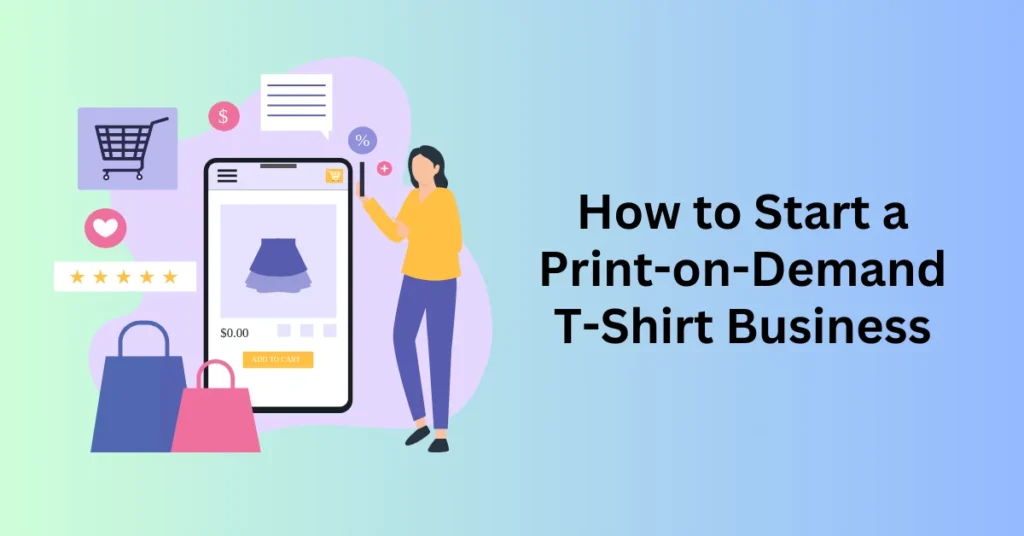Embarking on a journey to start your own t-shirt business is an exciting endeavour, but it also demands careful planning and execution. The modern t-shirt industry offers various business models. Print-on-demand (POD) T-shirt is one of the most accessible and low-risk options.
In this extensive guide, we will explain the step-by-step process of establishing a thriving t-shirt business. Not only that, but we will also pay special attention to the advantages and intricacies of the print-on-demand approach.
Whether you’re a seasoned entrepreneur or a newcomer to the business world, this guide will provide you with the knowledge and strategies to navigate the competitive landscape of t-shirt printing.
Start Your Print-On-Demand Business with Shopify
Market Research and Niche Selection – Print-on-demand T-Shirt

The foundation of a successful t-shirt business is built upon solid market research and niche selection. It’s essential to gain a deep understanding of your target audience, their preferences, behaviours, and buying patterns.
Identifying gaps in the market or underserved niches will empower you to create t-shirt designs that genuinely resonate with potential customers, setting the stage for your business’s success.
In your market research phase, consider conducting surveys, studying competitors, and engaging with your audience through social media and online forums. Then, you need to analyze trends and identify niches that align with your interests and expertise.
Moreover, explore the unique selling propositions (USPs) that can set your t-shirt business apart from the competition.
Business Plan and Legal Considerations

Before taking the plunge, you must develop a comprehensive business plan that outlines your objectives, strategies, and financial projections. This document will serve as your roadmap, guiding your decisions and actions throughout the business journey.
Furthermore, you must address various legal considerations, such as business registration, permits, and potential trademark issues if you plan to incorporate copyrighted materials into your designs. Consulting with legal experts or business advisors can help ensure full compliance with relevant laws and regulations.
Your business plan should encompass vital aspects like budgeting, pricing strategy, and a clear roadmap for growth. To do this, you need to then take the time to draft detailed financial projections, including startup costs, operational expenses, and revenue forecasts.
Additionally, thoroughly research and understand the legal requirements specific to your location, as these can vary widely.
Branding and Design

Crafting a compelling brand identity is critical in the t-shirt business. This step involves selecting a unique and memorable brand name, designing an eye-catching logo, and developing a consistent design aesthetic that resonates with your target audience.
If you lack design skills, consider enlisting the services of a professional designer or utilizing design tools like Adobe Illustrator or Canva.
Your branding extends beyond mere visuals. It encompasses the emotions and perceptions associated with your brand. You will also need to create a brand story that connects with your audience on a personal level.
Consider your brand’s tone, messaging, and values to ensure they align with your target market’s preferences.
Sourcing Quality T-Shirts

The quality of your t-shirts plays a pivotal role in customer satisfaction and brand reputation. As you venture into the t-shirt business, you need to diligently research and source high-quality blank t-shirts from reputable suppliers.
Factors such as fabric type, fit, and colour options should be carefully considered. Establishing a strong and reliable relationship with a reputable supplier ensures a consistent and dependable source of inventory for your business.
Don’t rush this step because quality is paramount. Research multiple suppliers, request samples, and assess their product quality, reliability, and pricing. Depending on your niche, you may also want to explore sustainable and eco-friendly options, as these can be attractive to environmentally-conscious consumers.
Start Your Print-On-Demand Business with Shopify
Print-on-Demand vs. Traditional Printing
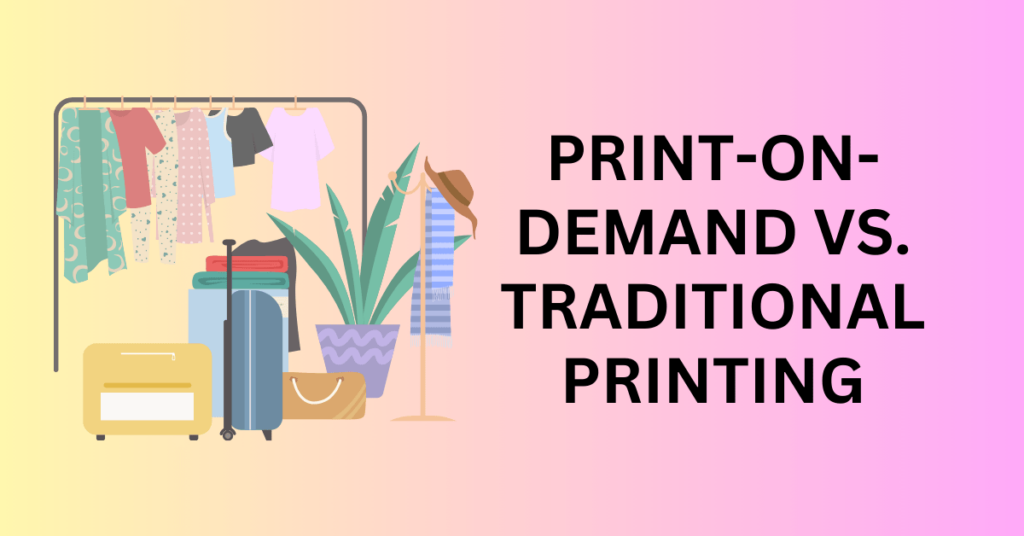
In recent years, the t-shirt industry has witnessed the rise of the print-on-demand (POD) model, which offers significant advantages, especially for beginners. With POD, you avoid the need for bulk inventory storage and the complexities of printing and fulfilment.
Instead, you partner with a POD service provider that handles printing and shipping on a per-order basis.
Advantages of Print-on-Demand:
- No Inventory Hassles: Unlike traditional printing, you won’t have to invest in or store a large inventory of t-shirts.
- Lower Upfront Costs: The POD model minimizes upfront expenses, making it accessible for entrepreneurs with limited capital.
- On-Demand Production: Your t-shirts are printed and shipped only when orders are received.
- Design Versatility: With POD, you can offer a wide range of designs without the risk of overcommitting to one style.
Disadvantages of Print-on-Demand:
- Reduced Profit Margins: While the upfront costs are lower, POD typically yields lower profit margins per t-shirt compared to bulk printing.
- Limited Control: You have limited control over the production and fulfilment process, which can affect quality and shipping times.
It’s crucial to weigh the pros and cons of the POD model against your specific business goals. If you prefer more control over the production process and can handle larger inventory commitments, traditional printing might be a better fit.
However, if you value flexibility and wish to minimize risk, POD is an excellent choice, especially for newcomers to the industry.
Choosing a Print-on-Demand Partner
Selecting the right POD partner is pivotal to the success of your business. The POD market offers various service providers, each with its strengths and weaknesses.
Your choice will significantly impact your business’s efficiency, customer satisfaction, and profitability. To make an informed decision, conduct thorough research and comparisons based on factors such as pricing, printing options, product selection, and shipping speed.
Explore different POD platforms, read user reviews, and reach out to their customer support teams to gain a deeper understanding of their services and capabilities. Keep in mind that your choice of POD partner should align with your brand’s image and quality standards.
Start Your Print-On-Demand Business with Printify
Setting Up Your Online Store – Print-on-demand T-Shirt
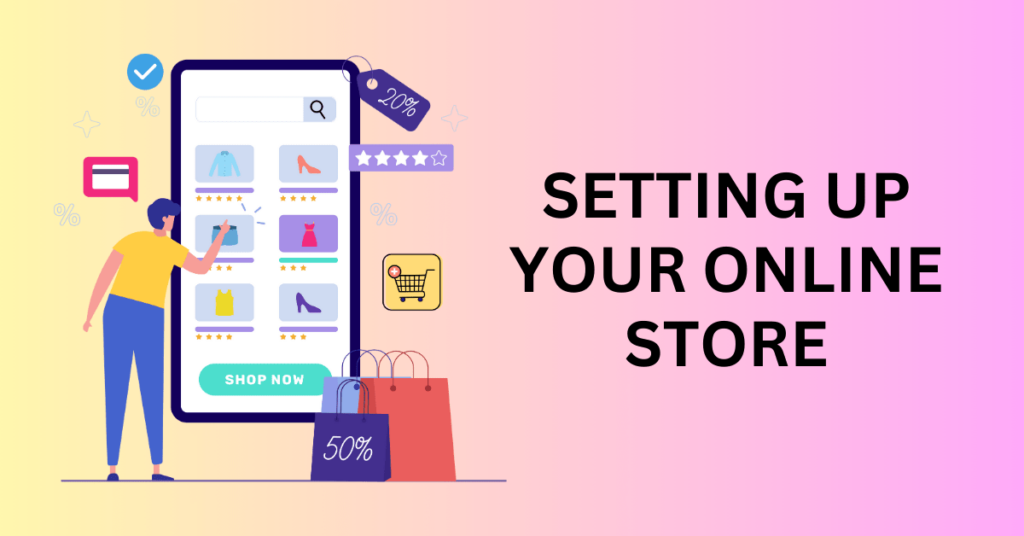
Establishing a robust online presence is a fundamental step in reaching and engaging your target audience. You can achieve this by creating your e-commerce website or setting up shop on established platforms like Shopify, WooCommerce, or Etsy.
The key is to tailor your online store to your brand’s visual identity, ensuring that it is user-friendly, mobile-responsive, and optimized for search engines (SEO).
Your online store should be designed with the customer journey in mind. Implement clear navigation, high-quality product images, and persuasive copy that communicates the value of your t-shirts.
Furthermore, incorporate secure payment gateways and prioritize a seamless checkout process to reduce cart abandonment rates.
Product Listings and Pricing – Print-on-demand T-Shirt

Your product listings serve as the digital storefront of your t-shirt business. Therefore, it’s imperative to create compelling listings that entice potential buyers.
This involves showcasing your t-shirts with high-quality images, providing detailed and persuasive product descriptions, and clearly presenting pricing information. Your pricing strategy should consider production costs, overhead, and profit margins.
Invest time and effort into photography, ensuring that your product images showcase your t-shirts from various angles. Describe the materials, fit, and care instructions accurately in your product descriptions.
Be transparent about your pricing structure, and remember that while competitive pricing is important, it should never undermine the perceived value of your products.
Start Your Print-On-Demand Business with Printify
Marketing and Promotion – Print-on-demand T-Shirt

Effective marketing is the key to attracting customers to your t-shirt business. It’s not enough to have great products; you must also effectively communicate their value to your target audience.
Your marketing strategy should encompass a range of tactics, including social media marketing, email marketing, content marketing, and paid advertising. Engage with your audience, run promotions, and explore collaborations with influencers or complementary brands in your niche to boost your visibility.
Your marketing strategy should be tailored to your specific target audience and niche. For instance, if you’re targeting a younger, trend-focused demographic, platforms like Instagram and TikTok may be more effective. Monitor your marketing efforts closely, track key performance indicators (KPIs), and be ready to adjust your strategy based on the data you gather.
Start Your Print-On-Demand Business with Printify
Order Fulfilment and Customer Service
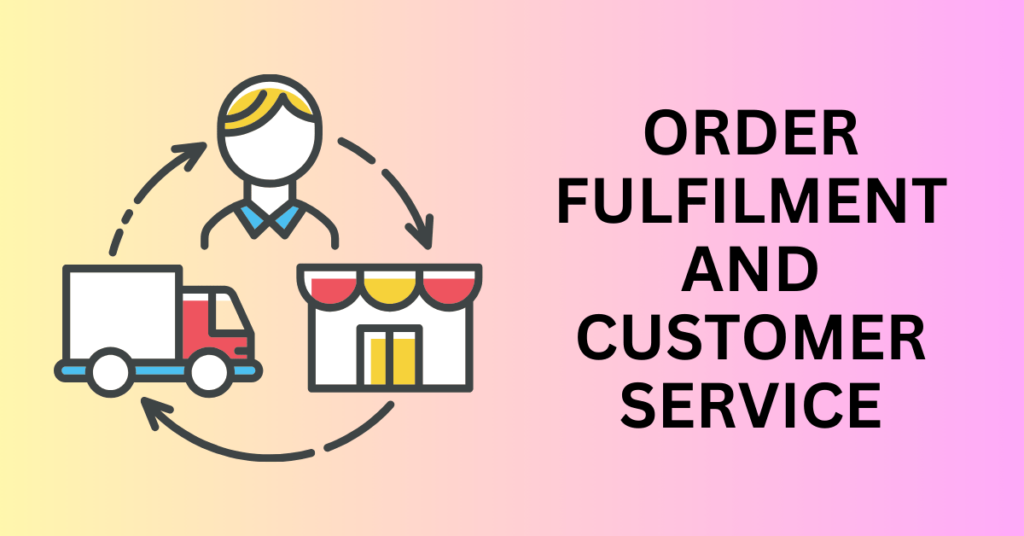
In the print-on-demand model, order fulfilment is primarily handled by your chosen POD partner. However, it’s essential to maintain a vigilant eye on this process to ensure that orders are processed accurately and delivered on time.
Additionally, providing exceptional customer service is paramount. Address inquiries promptly, establish clear return and exchange policies and resolve any issues to maintain a positive customer experience.
While your POD partner handles the production and shipping logistics, your role is to serve as a bridge between your customers and the fulfilment process. Communication is key. You need to provide your customers with order updates and tracking information and be responsive to any questions or concerns.
Excellent customer service can lead to repeat business and positive word-of-mouth recommendations.
Scaling Your Business – Print-on-demand T-Shirt
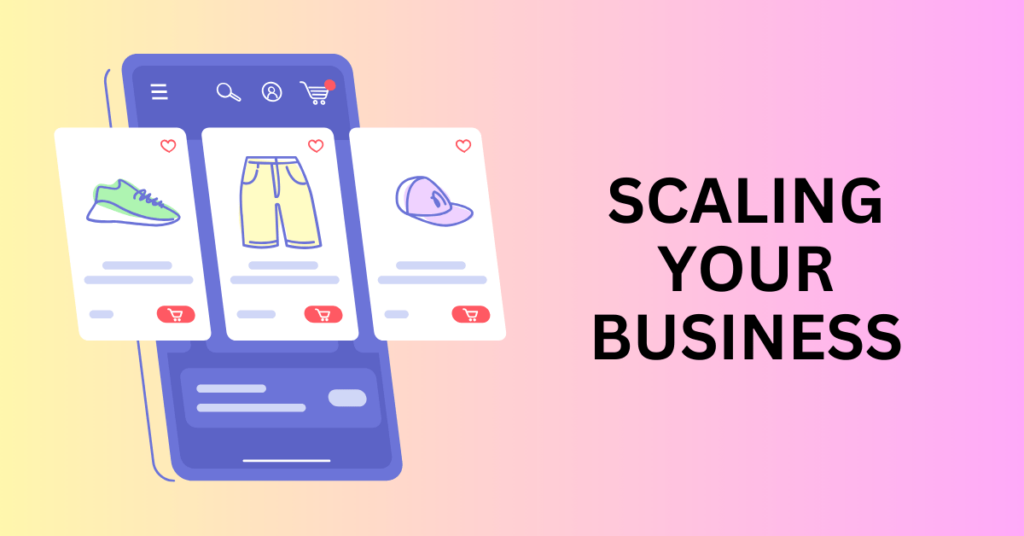
As your t-shirt business grows, it’s natural to explore opportunities for expansion and diversification. Consider broadening your product offerings by adding complementary items such as hoodies, tote bags, or accessories.
Explore new niches or sub-niches that align with your brand’s identity and resonate with your customer base. Scaling might also involve exploring options beyond the online space, such as opening a physical store or attending trade shows and conventions to increase brand exposure.
Scaling a business requires careful planning and consideration. Before expanding into new product categories or markets, conduct thorough research and feasibility studies.
Ensure that your infrastructure, including your supply chain and customer support, can handle the increased demand without compromising quality.
Track and Analyze Your Performance

The journey of running a t-shirt business is an ongoing process that demands constant assessment and adaptation. And, monitoring your business’s performance through key performance indicators (KPIs) is vital.
Key metrics to track include sales figures, website traffic, conversion rates, and customer feedback. You can use this data to make informed decisions, refine your marketing strategies, and stay ahead of evolving market trends.
Besides, you need to leverage data analytics tools to gain deep insights into customer behaviour and preferences. This information can also inform your product development, marketing efforts, and inventory management.
Regularly revisit your business plan and objectives, making necessary adjustments to align with your current and future goals.
Final Thoughts – How to Start a Print-on-Demand T-Shirt Business
Starting a t-shirt business, particularly with the print-on-demand model, provides an accessible gateway into the realm of entrepreneurship. By conducting meticulous research, establishing a compelling brand identity, and harnessing the capabilities of POD platforms. Then, you can transform your passion for design into a profitable and sustainable venture.
Success in the t-shirt industry hinges on dedication, creativity, and an unwavering commitment to delivering outstanding products and service to your customers.
As you embark on this entrepreneurial journey, remain adaptable, open to learning, and deeply passionate about your craft. With these qualities, you can propel toward building a thriving and enduring t-shirt business.
